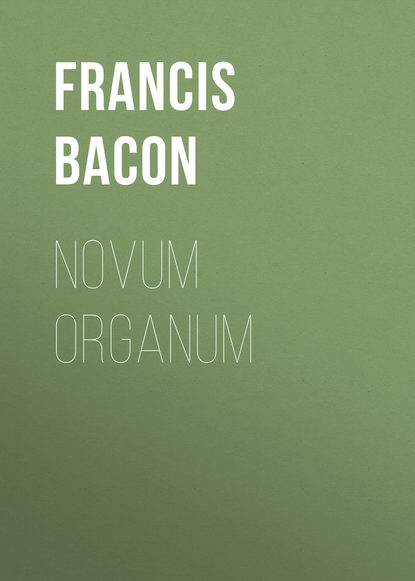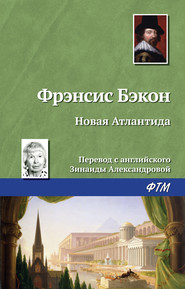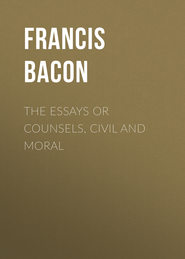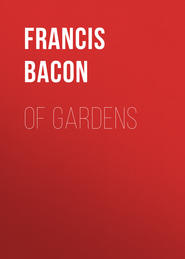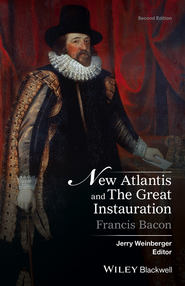По всем вопросам обращайтесь на: info@litportal.ru
(©) 2003-2024.
✖
Novum Organum
Настройки чтения
Размер шрифта
Высота строк
Поля
This is erroneous – all metals expand considerably when heated.
104
“Quid ipsum,” the τὸ τὶ ἦν εἶναι of Aristotle.
105
To show the error of the text, we need only mention the case of water, which, when confined in corked vases, and exposed to the action of a freezing atmosphere, is sure to swell out and break those vessels which are not sufficiently large to contain its expanded volume. Megalotti narrates a hundred other instances of a similar character. —Ed.
106
Bacon’s inquisition into the nature of heat, as an example of the mode of interpreting nature, cannot be looked upon otherwise than as a complete failure. Though the exact nature of this phenomenon is still an obscure and controverted matter, the science of thermotics now consists of many important truths, and to none of these truths is there so much as an approximation in Bacon’s process. The steps by which this science really advanced were the discovery of a measure of a heat or temperature, the establishment of the laws of conduction and radiation, of the laws of specific heat, latent heat, and the like. Such advances have led to Ampère’s hypothesis, that heat consists in the vibrations of an imponderable fluid; and to Laplace’s theory, that temperature consists in the internal radiation of a similar medium. These hypotheses cannot yet be said to be even probable, but at least they are so modified as to include some of the preceding laws which are firmly established, whereas Bacon’s “form,” or true definition of heat, as stated in the text, includes no laws of phenomena, explains no process, and is indeed itself an example of illicit generalization.
In all the details of his example of heat he is unfortunate. He includes in his collection of instances, the hot tastes of aromatic plants, the caustic effects of acids, and many other facts which cannot be ascribed to heat without a studious laxity in the use of the word. —Ed.
107
By this term Bacon understands general phenomena, taken in order from the great mass of indiscriminative facts, which, as they lie in nature, are apt to generate confusion by their number, indistinctness and complication. Such classes of phenomena, as being peculiarly suggestive of causation, he quaintly classes under the title of prerogative inquiries, either seduced by the fanciful analogy, which such instances bore to the prerogativa centuria in the Roman Comitia, or justly considering them as Herschel supposes to hold a kind of prerogative dignity from being peculiarly suggestive of causation.
Two high authorities in physical science (v. Herschel, Nat. Phil., art. 192; Whewell’s Philosophy of the Inductive Sciences, vol. ii. p. 243) pronounce these instances of little service in the task of induction, being for the most part classed not according to the ideas which they involve, or to any obvious circumstance in the facts of which they consist, but according to the extent and manner of their influence upon the inquiry in which they are employed. Thus we have solitary instances, migrating instances, ostensive instances, clandestine instances, so termed according to the degree in which they exhibit, or seem to exhibit, the property, whose nature we would examine. We have guide-post instances, crucial instances, instances of the parted road, of the doorway, of the lamp, according to the guidance they supply to our advance. Whewell remarks that such a classification is much of the same nature as if, having to teach the art of building, we were to describe tools with reference to the amount and place of the work which they must do, instead of pointing out their construction and use; as if we were to inform the pupil that we must have tools for lifting a stone up, tools for moving it sidewise, tools for laying it square, and tools for cementing it firmly. The means are thus lost in the end, and we reap the fruits of unmethodical arrangement in the confusion of cross division. In addition, all the instances are leavened with the error of confounding the laws with the causes of phenomena, and we are urged to adopt the fundamental error of seeking therein the universal agents, or general causes of phenomena, without ascending the gradual steps of intermediate laws. —Ed.
108
Of these nine general heads no more than the first is prosecuted by the author.
109
This very nearly approaches to Sir I. Newton’s discovery of the decomposition of light by the prism.
110
The mineral kingdom, as displaying the same nature in all its gradations, from the shells so perfect in structure in limestone to the finer marbles in which their nature gradually disappears, is the great theatre for instances of migration. —Ed.
111
Bacon was not aware of the fact since brought to light by Römer, that down to fourteen fathoms from the earth’s mean level the thermometer remains fixed at the tenth degree, but that as the thermometer descends below that depth the heat increases in a ratio proportionate to the descent, which happens with little variation in all climates. Buffon considers this a proof of a central fire in our planet. —Ed.
112
All the diversities of bodies depend upon two principles, i. e., the quantity and the position of the elements that enter into their composition. The primary difference is not that which depends on the greatest or least quantity of material elements, but that which depends on their position. It was the quick perception of this truth that made Leibnitz say that to complete mathematics it was necessary to join to the analysis of quantity the analysis of position. —Ed.
113
Query?
114
The real cause of this phenomenon is the attraction of the surface-water in the vessel by the sides of the bubbles. When the bubbles approach, the sides nearest each other both tend to raise the small space of water between them, and consequently less water is raised by each of these nearer sides than by the exterior part of the bubble, and the greater weight of the water raised on the exterior parts pushes the bubbles together. In the same manner a bubble near the side of a vessel is pushed toward it; the vessel and bubble both drawing the water that is between them. The latter phenomenon cannot be explained on Bacon’s hypothesis.
115
Modern discoveries appear to bear out the sagacity of Bacon’s remark, and the experiments of Baron Cagnard may be regarded as a first step toward its full demonstration. After the new facts elicited by that philosopher, there can be little doubt that the solid, liquid and aëriform state of bodies are merely stages in a progress of gradual transition from one extreme to the other, and that however strongly marked the distinctions between them may appear, they will ultimately turn out to be separated by no sudden or violent line of demarcation, but slide into each other by imperceptible gradations. Bacon’s suggestion, however, is as old as Pythagoras, and perhaps simultaneous with the first dawn of philosophic reason. The doctrine of the reciprocal transmutation of the elements underlies all the physical systems of the ancients, and was adopted by the Epicureans as well as the Stoics. Ovid opens his last book of the Metamorphoses with the poetry of the subject, where he expressly points to the hint of Bacon: —
– “Tenuatus in auras
Aëraque humor abit, etc., etc.
Inde retro redeunt, idemque retexitur ordo.” – xv. 246–249.
and Seneca, in the third book of his Natural Philosophy, quest. iv., states the opinion in more precise language than either the ancient bard or the modern philosopher. —Ed.
116
The author’s own system of Memoria Technica may be found in the De Augmentis, chap. xv. We may add that, notwithstanding Bacon’s assertion that he intended his method to apply to religion, politics, and morals, this is the only lengthy illustration he has adduced of any subject out of the domain of physical science. —Ed.
117
The collective instances here meant are no other than general facts or laws of some degree of generality, and are themselves the result of induction. For example, the system of Jupiter, or Saturn with its satellites, is a collective instance, and materially assisted in securing the admission of the Copernican system. We have here in miniature, and displayed at one view, a system analogous to that of the planets about the sun, of which, from the circumstance of our being involved in it, and unfavorably situated for seeing it otherwise than in detail, we are incapacitated from forming a general idea, but by slow and progressive efforts of reason.
But there is a species of collective instance which Bacon does not seem to have contemplated, in which particular phenomena are presented in such numbers at once, as to make the induction of their law a matter of ocular inspection. For example, the parabolic form assumed by a jet of water spouted out of a hole is a collective instance of the velocities and directions of the motions of all the particles which compose it seen together, and which thus leads us without trouble to recognize the law of the motion of a projectile. Again, the beautiful figures exhibited by sand strewed on regular plates of glass or metal set in vibration, are collective instances of an infinite number of points which remain at rest while the remainder of the plate vibrates, and in consequence afford us an insight into the law which regulates their arrangement and sequence throughout the whole surface. The richly colored lemniscates seen around the optic axis of crystals exposed to polarized light afford a striking instance of the same kind, pointing at once to the general mathematical expression of the law which regulates their production. Such collective instances as these lead us to a general law by an induction which offers itself spontaneously, and thus furnish advanced posts in philosophical exploration. The laws of Kepler, which Bacon ignored on account of his want of mathematical taste, may be cited as a collective instance. The first is, that the planets move in elliptical orbits, having the sun for their common focus. The second, that about this focus the radius vector of each planet describes equal areas in equal times. The third, that the squares of the periodic times of the planets are as the cubes of their mean distance from the sun. This collective instance “opened the way” to the discovery of the Newtonian law of gravitation. —Ed.
118
Is not this very hasty generalization? Do serpents move with four folds only? Observe also the motion of centipedes and other insects.
119
Shaw states another point of difference between the objects cited in the text – animals having their roots within, while plants have theirs without; for their lacteals nearly correspond with the fibres of the roots in plants; so that animals seem nourished within themselves as plants are without. —Ed.
120
Bacon falls into an error here in regarding the syllogism as something distinct from the reasoning faculty, and only one of its forms. It is not generally true that the syllogism is only a form of reasoning by which we unite ideas which accord with the middle term. This agreement is not even essential to accurate syllogisms; when the relation of the two things compared to the third is one of equality or similitude, it of course follows that the two things compared may be pronounced equal, or like to each other. But if the relation between these terms exist in a different form, then it is not true that the two extremes stand in the same relation to each other as to the middle term. For instance, if A is double of B, and B double of C, then A is quadruple of C. But then the relation of A to C is different from that of A to B and of B to C. —Ed.
121
Comparative anatomy is full of analogies of this kind. Those between natural and artificial productions are well worthy of attention, and sometimes lead to important discoveries. By observing an analogy of this kind between the plan used in hydraulic engines for preventing the counter-current of a fluid, and a similar contrivance in the blood vessels, Harvey was led to the discovery of the circulation of the blood. —Ed.
122
This is well illustrated in plants, for the gardener can produce endless varieties of any known species, but can never produce a new species itself.
123
The discoveries of Tournefort have placed moss in the class of plants. The fish alluded to below are to be found only in the tropics. —Ed.
124
There is, however, no real approximation to birds in either the flying fish or bat, any more than a man approximates to a fish because he can swim. The wings of the flying fish and bat are mere expansions of skin, bearing no resemblance whatever to those of birds. —Ed.





